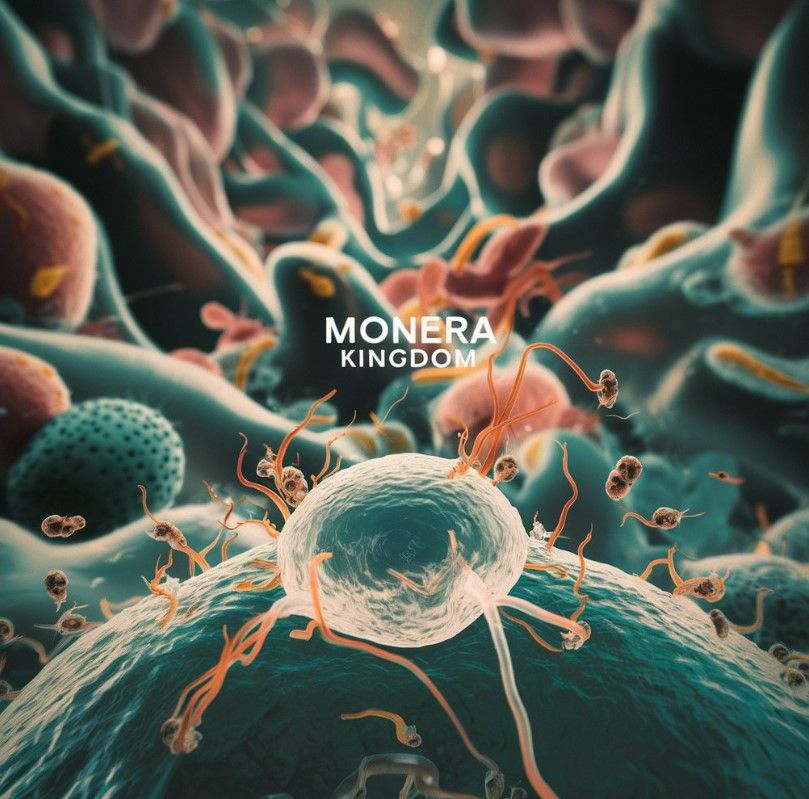Introduction
The realm of life encompasses a vast array of organisms, each with unique characteristics and evolutionary histories. Among these diverse life forms, the Kingdom Monera holds a special place, representing the foundation of prokaryotic life on Earth. This kingdom, historically encompassing bacteria and archaea, has played a pivotal role in shaping the biosphere and continues to fascinate scientists with its diversity and adaptability. This article provides a historical and scholarly exploration of the Kingdom Monera, delving into its defining characteristics, classification throughout history, and its profound ecological significance.
Defining Characteristics of Monera
Monera is characterized by several defining features that set it apart from other kingdoms. Primarily, these organisms are unicellular, meaning they exist as single-celled entities. This unicellularity is a defining aspect of their evolutionary trajectory and has driven the development of unique adaptations for survival and reproduction.
Furthermore, Monera is comprised of prokaryotes, organisms lacking a true membrane-bound nucleus and other complex organelles found in eukaryotic cells. Their genetic material, DNA, exists as a naked, circular molecule within the cytoplasm, a key characteristic differentiating them from eukaryotes.
The nutritional strategies of Monera are incredibly diverse. Some species are autotrophic, capable of synthesizing their own food from inorganic sources like carbon dioxide and hydrogen sulfide. Others are heterotrophic, relying on external organic matter for nourishment, either as saprotrophs (decomposers), parasites, or symbionts.
Reproduction in Monera primarily occurs asexually through processes like binary fission or budding, where a single cell divides to produce two identical daughter cells. However, a form of genetic exchange known as conjugation can also occur, allowing for the horizontal transfer of genetic material between individuals.
A Historical Journey Through Monera Classification
The classification of Monera has undergone significant changes throughout the history of biological sciences. Early naturalists, lacking the sophisticated tools of modern biology, primarily categorized organisms based on superficial characteristics, such as whether they were animal, vegetable, or mineral.
The invention of the microscope in the 17th century revolutionized the study of life, enabling Antonie van Leeuwenhoek to observe bacteria, which he termed “animalcules.” This discovery marked the beginning of a deeper understanding of the microscopic world and laid the foundation for future classification schemes.
Ernst Haeckel and the Three-Kingdom System
In 1866, Ernst Haeckel, a prominent German biologist and proponent of evolutionary theory, proposed a three-kingdom system that revolutionized biological classification. This system included Monera as the first kingdom, encompassing what he described as simple, structure-less organisms, characterized by homogeneity. Haeckel’s classification highlighted the distinct nature of prokaryotes and their divergence from more complex life forms. He further subdivided Monera into two groups: Gymnomoneren and Lepomoneren, encompassing a variety of bacterial groups and some small eukaryotic organisms, a reflection of the limited understanding of prokaryotic diversity at that time.
Subsequent Refinements and the Three-Domain System
The classification of Monera continued to evolve as scientific understanding expanded. In 1925, Édouard Chatton, a French biologist, recognized the fundamental distinction between organisms with and without a nucleus, proposing the terms “prokaryote” and “eukaryote.” He elevated Monera to the rank of a kingdom, placing it as the sole member of the Prokaryote empire.
However, with advancements in molecular biology and phylogenetic analyses, a more refined understanding of the evolutionary relationships between prokaryotic organisms emerged. In 1977, Carl Woese and George Fox, using ribosomal RNA sequencing, revolutionized the classification of life. Their groundbreaking research demonstrated that the archaea, initially classified within Monera, were distinct from bacteria and shared a closer evolutionary relationship with eukaryotes. This led to the adoption of the three-domain system, which replaced the Kingdom Monera with two separate domains: Bacteria and Archaea. The third domain, Eukarya, encompasses all eukaryotic organisms. This paradigm shift recognized the ancient and independent evolutionary lineages of these groups.
The Structure and Characteristics of Monera
Cell Structure: Moneran cells are characterized by a rigid cell wall, primarily composed of peptidoglycan, a unique polymer providing structural support and protection. A plasma membrane encloses the cell, regulating the passage of substances in and out of the cell. The cytoplasm, a gel-like substance, fills the cell and houses the cellular machinery, including ribosomes, which are responsible for protein synthesis. However, Moneran cells lack the membrane-bound organelles, such as mitochondria, chloroplasts, and a nucleus, found in eukaryotic cells.
Diversity of Forms: Monera exhibits a remarkable diversity of shapes and forms, including cocci (spherical), bacilli (rod-shaped), spirilla (spiral), and many others. These variations in shape reflect adaptations to specific environments and lifestyles.
Nutritional Strategies:
- Autotrophic: Some Monera, like cyanobacteria, are autotrophic, utilizing sunlight and inorganic compounds to synthesize organic molecules, much like plants. These organisms play a crucial role in primary production in various ecosystems.
- Heterotrophic: Other Monera are heterotrophic, obtaining their nutrients from organic sources. These organisms can be saprotrophs, decomposing organic matter and recycling essential nutrients within ecosystems. Some are parasites, deriving nutrients from living hosts, while others engage in symbiotic relationships with other organisms.
Key Groups Within Monera
Monera is further subdivided into three primary sub-kingdoms:
- Archaebacteria: These ancient bacteria are often found in extreme environments, such as hot springs (thermoacidophiles), salty lakes (halophiles), and marshy areas (methanogens). Their unique cell wall structures and distinct RNA sequences distinguish them from other bacteria.
- Eubacteria: Often referred to as “true bacteria,” Eubacteria are the most widely studied and diverse group of bacteria. Their cell walls are predominantly composed of peptidoglycan. Eubacteria are further categorized into Gram-positive and Gram-negative bacteria, based on their cell wall structure and staining properties. They exhibit a vast range of metabolic capabilities and are found in almost every conceivable habitat.
- Cyanobacteria: These photosynthetic prokaryotes, also known as blue-green algae, are vital for the production of oxygen and play a critical role in the nitrogen cycle. They possess chlorophyll a, carotenoids, and phycobilins, enabling them to harness light energy for photosynthesis. Cyanobacteria have a remarkable evolutionary history, dating back billions of years, and have profoundly influenced the development of life on Earth.
The Ecological Significance of Monera
Monera plays a crucial role in maintaining the balance of ecosystems:
- Soil Enrichment: Monera contributes to soil fertility by decomposing organic matter and releasing essential nutrients. This decomposition process is vital for nutrient cycling and the maintenance of soil health.
- The Nitrogen Cycle: Some Monera are crucial to the nitrogen cycle, converting atmospheric nitrogen into forms that can be utilized by plants. This nitrogen fixation process is essential for plant growth and the overall health of terrestrial ecosystems.
- Food Production and Antibiotics: Certain Monera are harnessed by humans for various purposes. They play a significant role in the production of food items like yogurt, cheese, and certain fermented products. Moreover, many antibiotics, which are vital for combating bacterial infections, are derived from Monera.
- Sewage Treatment: Methanogens, a type of archaebacteria, are utilized in sewage treatment facilities. These organisms break down organic waste in anaerobic conditions, producing methane, which can be used as a source of energy.
Concluding Remarks
The Kingdom Monera, though historically classified differently, represents a fundamental aspect of life on Earth. The organisms within this kingdom, bacteria and archaea, are remarkably diverse and have profound impacts on the environment and human activities. Their evolutionary history, unique adaptations, and ecological roles continue to be a source of scientific inquiry and highlight the importance of these microscopic organisms in maintaining the delicate balance of our planet.

